Can Swift Tuttle have impacted Earth?
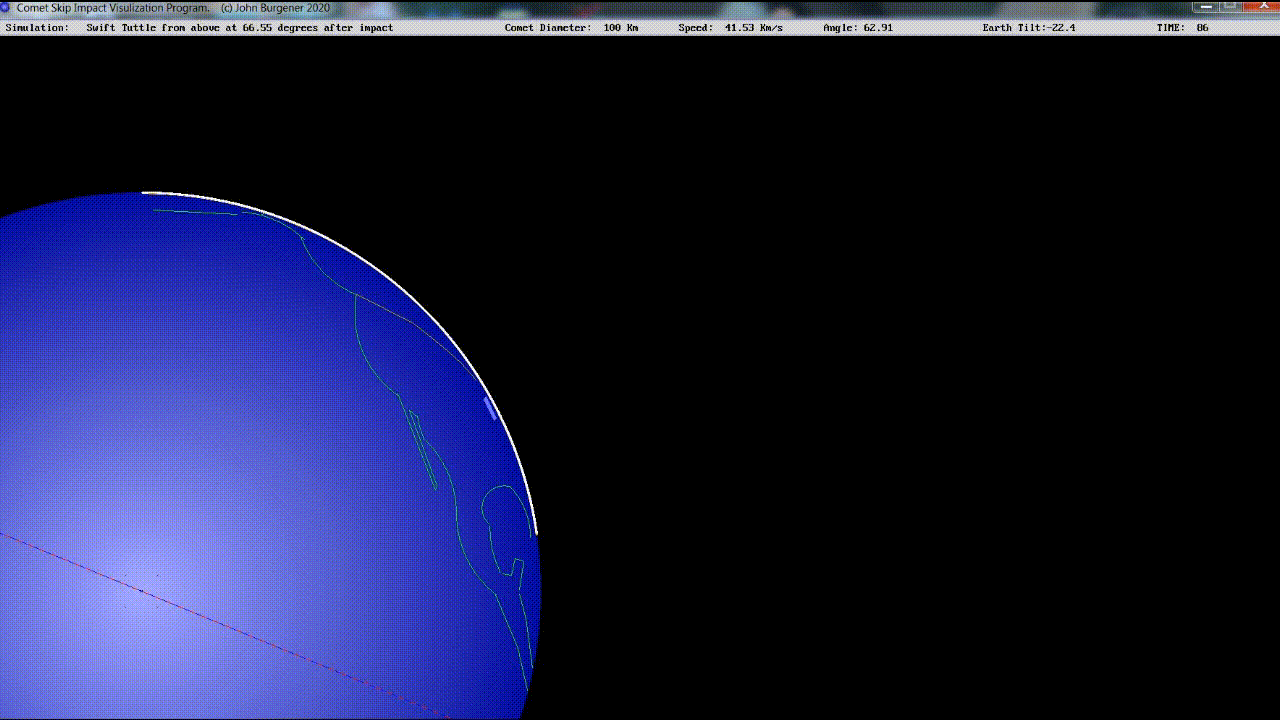 This is a simulation of Comet 109P / Swift Tuttle hitting Earth in a Skip
Impact. The original orbit's inclination to the Ecliptic would have been 62.7°, and the final / present angle is 66.6°. The Earth's tilt is shown as 22.4° - slightly less than the maximum. The point of impact is aimed at Lake Michigan to show that comet Swift Tuttle could have impacted there and to show that the ejecta would land across the US, potentially forming the Carolina Bays.
This is a simulation of Comet 109P / Swift Tuttle hitting Earth in a Skip
Impact. The original orbit's inclination to the Ecliptic would have been 62.7°, and the final / present angle is 66.6°. The Earth's tilt is shown as 22.4° - slightly less than the maximum. The point of impact is aimed at Lake Michigan to show that comet Swift Tuttle could have impacted there and to show that the ejecta would land across the US, potentially forming the Carolina Bays.
The above image is from the CometSkipImpacts program created by John Burgener for this poster. You can download it and try out many different simulations with larger or smaller comets, and different impact orientations. It is available on the web site: www.craters.ca/CometSkipImpacts.exe
This poster is proposing that Lake Michigan is a resultant crater from a skip type impact by comet Swift Tuttle. Comet impacts on Earth are rare, and skip impacts would be only 1% of any impacts that happen. So such an event would be very rare. However, rare is not the same as impossible. It is useful to review how comets and Earth can interact, and what range of impacts can happen.
Skip Impacts are Possible:
Following is an iSALE simulation of a Skip type impact. The comet is larger than realistic to show the effect more clearly.
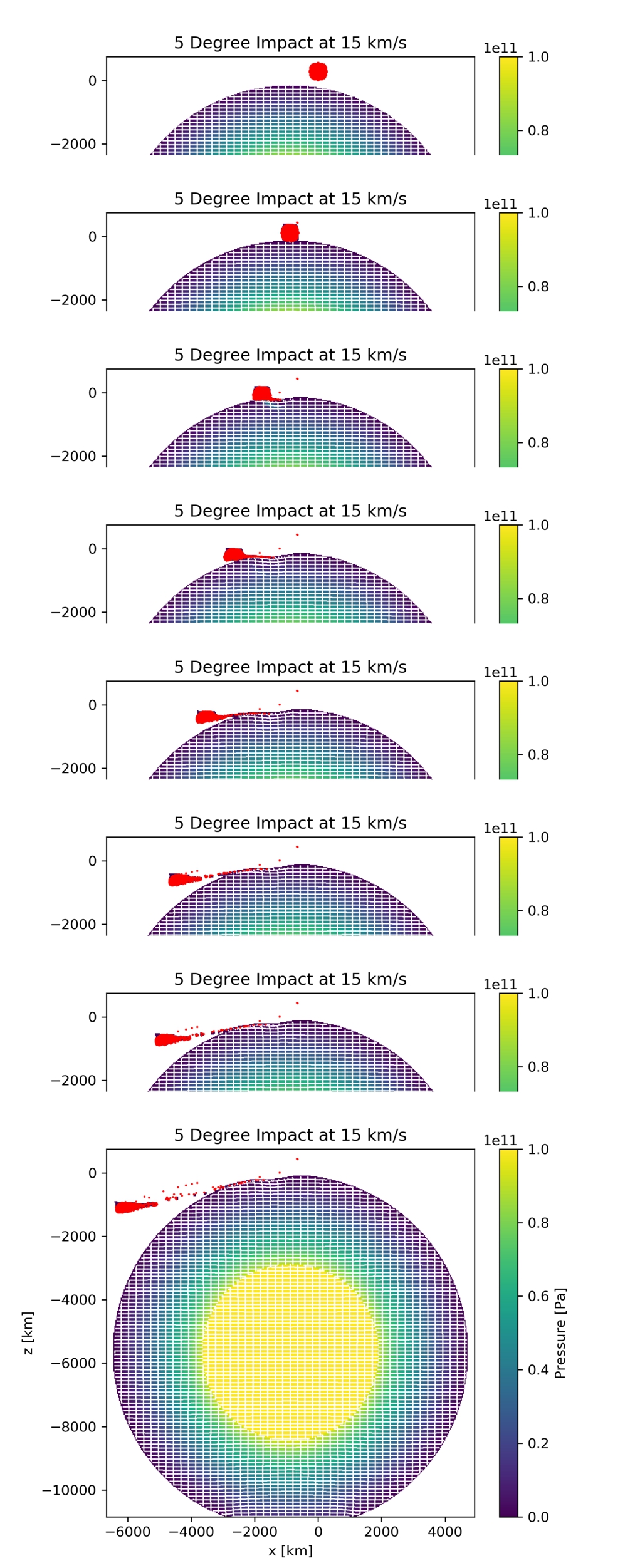
iSALE is a well recognized hydrocode program able to show impacts with reasonably accurate simulations that match real craters. The above
iSALE simulation shows that comets can do low angle skip type impacts and produce effects such as shown in the first video. However, iSALE
simulations are less detailed due to limitations of the size of blocks being considered, and due to time. An iSALE run takes weeks. The
CometSkipImacts program runs a simulation in minutes and shows higher resolution effects, but is less geologically accurate. It is mainly
useful in helping one visualize the possibilities with skip type impacts.
There are many alternative Skip Impacts that can happen. Following are some more examples. These and many other configurations are possible. Direct impacts are also possible. The intent of this poster is not to show all possibilities, but the one that best fits the explanation for the present fireball orbit distribution. Many possibilities exist, but only ONE actually happened. And only two of the following cases can provide the present resultant Swift Tuttle orbit with a 66.55° orbital inclination after the impact: The Swift Tuttle Impact shown above and the comet overtaking Earth. Both also are able to hit Earth at the location of Lake Michigan. It is worth noting that an impact by a comet traveling from the sun or head on will not be able to
produce a Lake Michigan location of a skip impact.
There are four basic categories of comet impacts with Earth:
1. Catching up from behind Earth with a 10-11 km /sec speed difference.
2. Heading towards or from the Sun, crossing Earth's orbit at a near 90° angle, with a 41 km/sec speed difference.
3. Passing Earth's orbit from an orbit not in the ecliptic plane such as with Swift Tuttle's 66.55° inclination to the Ecliptic plane, with a
speed difference of 40 km/sec.
4. Moving in a retrograde path (orbiting around the sun in the opposite direction to most planets, asteroids and comets) and hitting
Earth head on, with a 70 km/sec speed difference.
At present, there are comets in all four such categories that have Earth crossing orbits. They are not likely to hit Earth due to the very
short period of time in their long orbit paths that bring them close to where Earth could be. Both the comet and Earth need to be at the same
spot at the same time. However, low probability is not the same as impossible. Here are images of possible skip impacts from each category,
followed by some NASA orbit path images of some of the presently known comets showing the 4 categories. The range of possible impacts is shown
here for clarification of the possibilities. The premise of the poster is that a particular comet has previously impacted Earth. The following
images and notes are not the proposed impact, but similar ones worth noting as possibilities of other impacts.
Sample Skip Impacts
Skip Impact by comet overtaking Earth. Relative speed of 10 to 11 km/s:
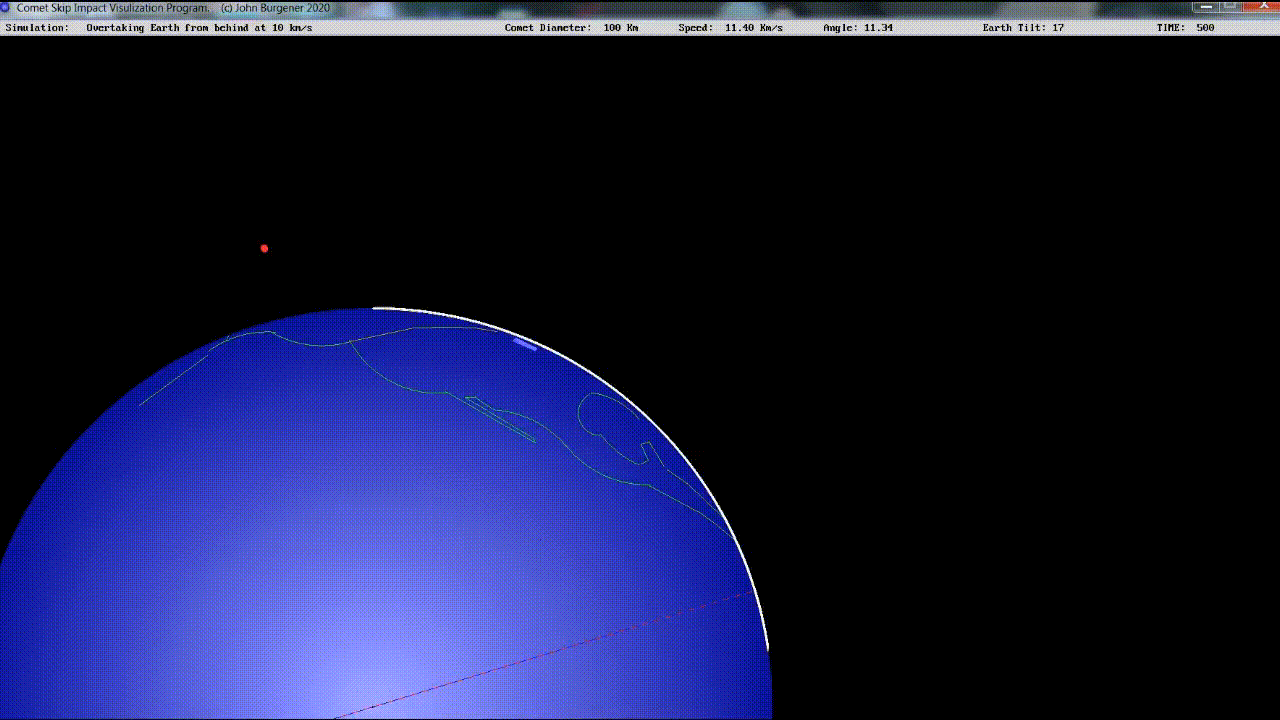
Skip Impact by comet traveling from closer approach to sun and crossing Earth's orbit at aprox. 90°. Relative speed of such an impact
is approximately 41 km/s.
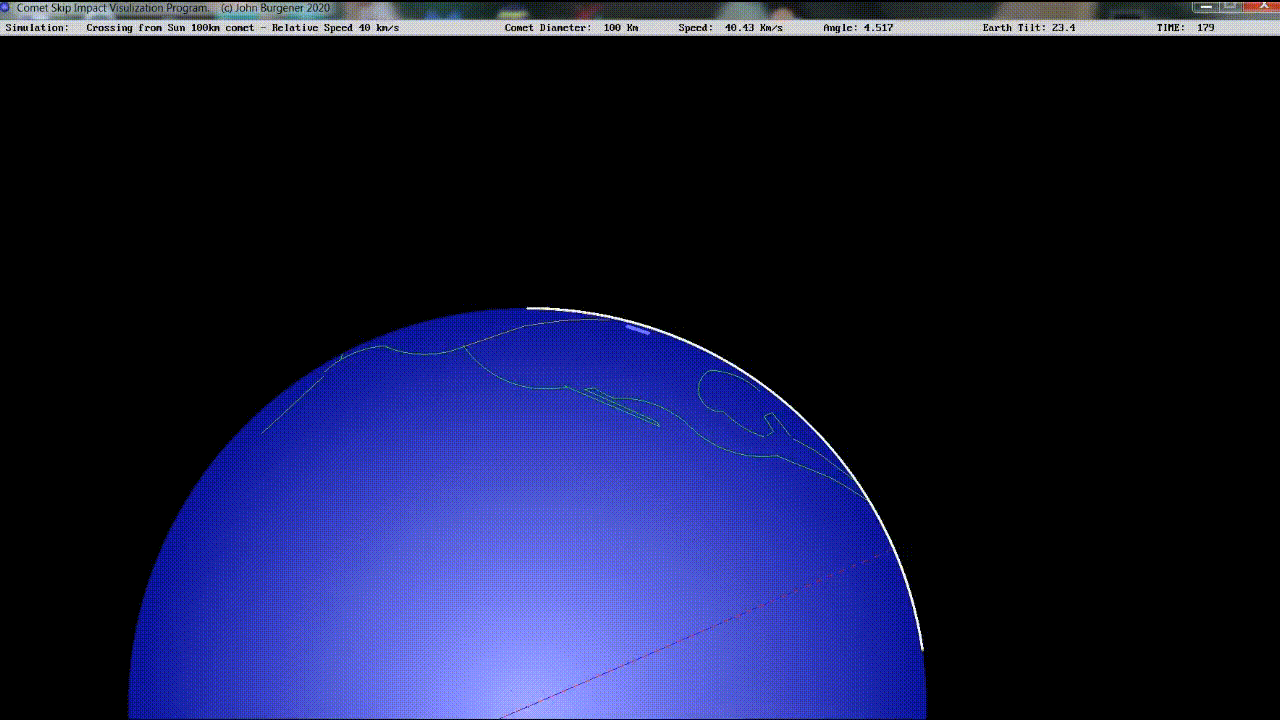
Skip Impact by comet traveling in retrograde orbit, hitting head-on, with a relative speed of 70 km/s:
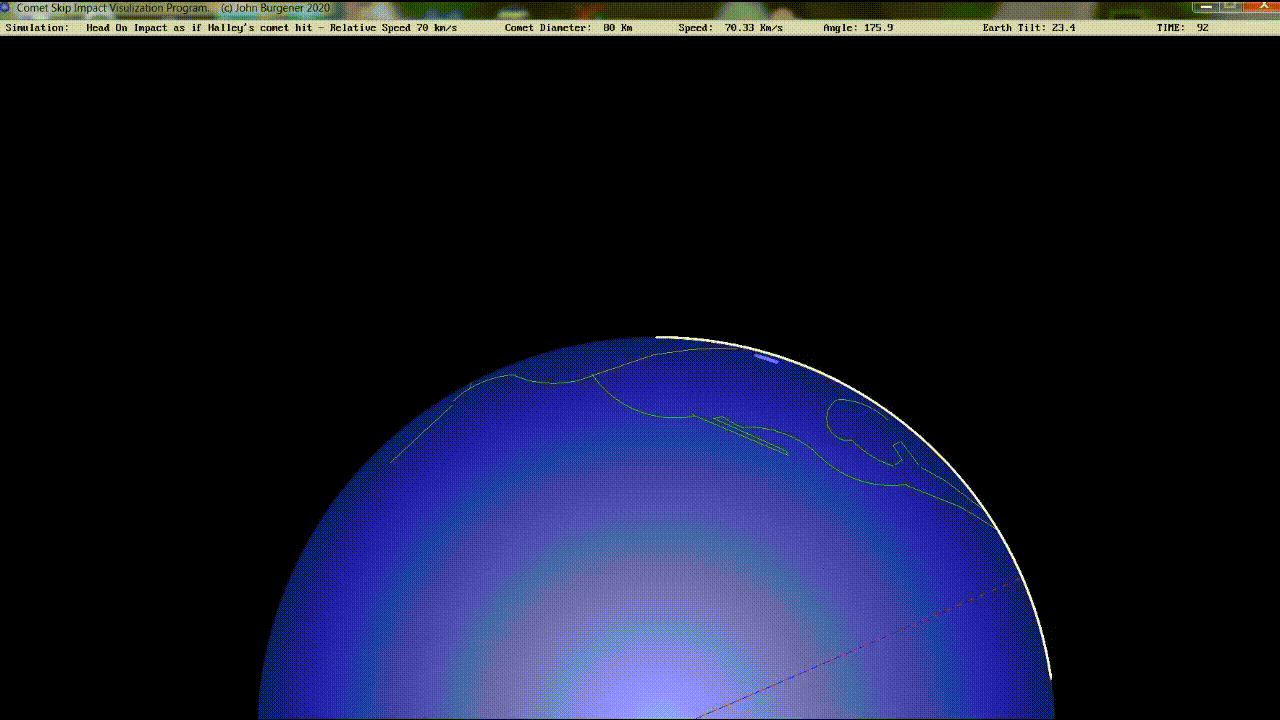
Real Comets with similar orientations as above examples:
Comets typically travel in the Ecliptic Plane, and typically in the same direction as Earth and the planets circle around the Sun. With most
comets originating from the Kuiper Belt, this is expected and accepted as the main group of comets. However, as comets interact with the
planets, their orbits often get changed and any imaginable orientation is possible. So there are 4 main categories of comet orbits that
intersect Earth's orbit:
1. Approaching Earth in a similar plane and direction to Earth's Orbit. The example below is the orbit of C/1991 L3 Levy.
Levy's orbit merges with Earth’s Orbit on the Ecliptic, with both traveling in the same direction as they pass. Levy moves faster than
Earth, so an impact would require Levy to approach from behind Earth, and catch up. The original speeds are 41 and 30 km/s, the difference
about 11 km/s, but gravity would add to the difference as they approach, so such an impact would be about 12 to 14 km/s. C/1991 L3 Levy is about
11.6 km in diameter.
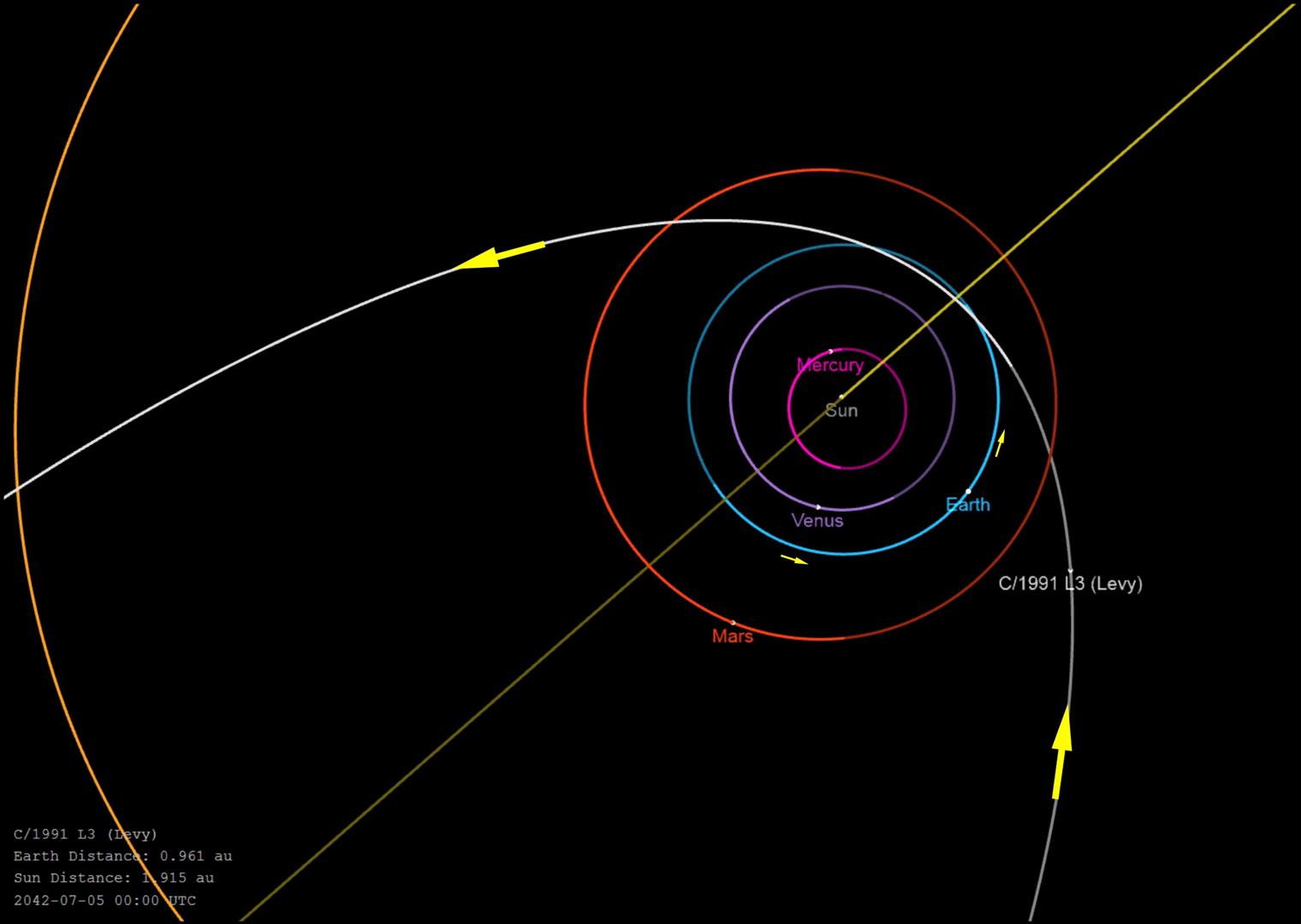
Comet C/1991 L3 Levy approaching Earth in similar plane and direction to Earth's Orbit - Image from JPL Small-Body Database Browser
2. Crossing Earth's orbit on a closer approach to the Sun. For example, C/1996 B2 (Hyakutake): which crosses Earth’s Orbit on the
Ecliptic, but still at right angles to Earth's orbit. Impacts would be at ~ 41 - 43 km/s.
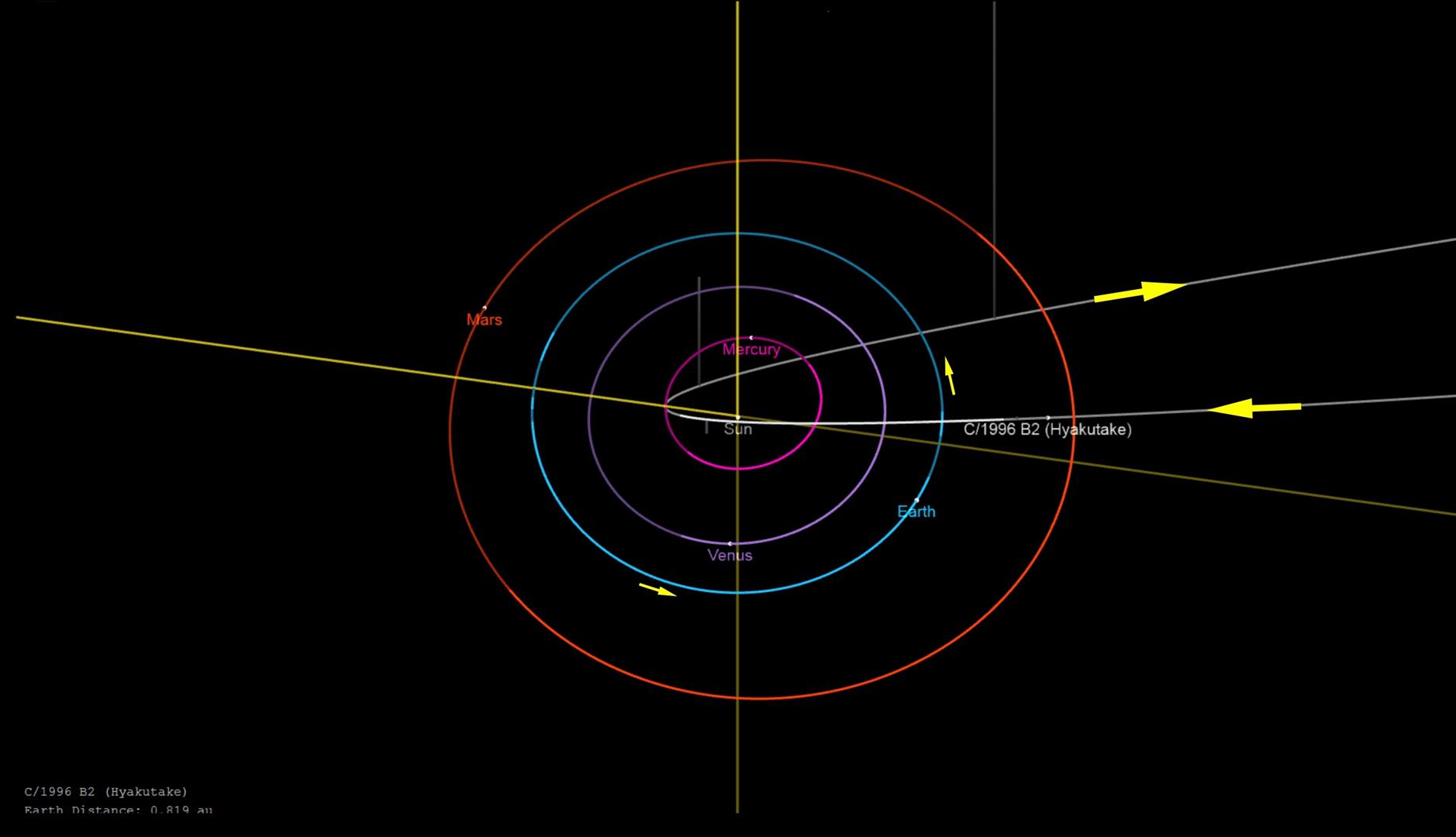
C/1996 B2 (Hyakutake): Crossing Earth’s Orbit on the Ecliptic
3. Crossing Earth's Orbit from above/below the Ecliptic plane. For example, comet 109P Swift-Tuttle. It is presently inclined at 66.55°.
Crossing Earth’s orbit from above the Ecliptic, adding its vector speed to Earths at nearly a right angle, so the impact speeds would be ~ 41 to
43 km/s.
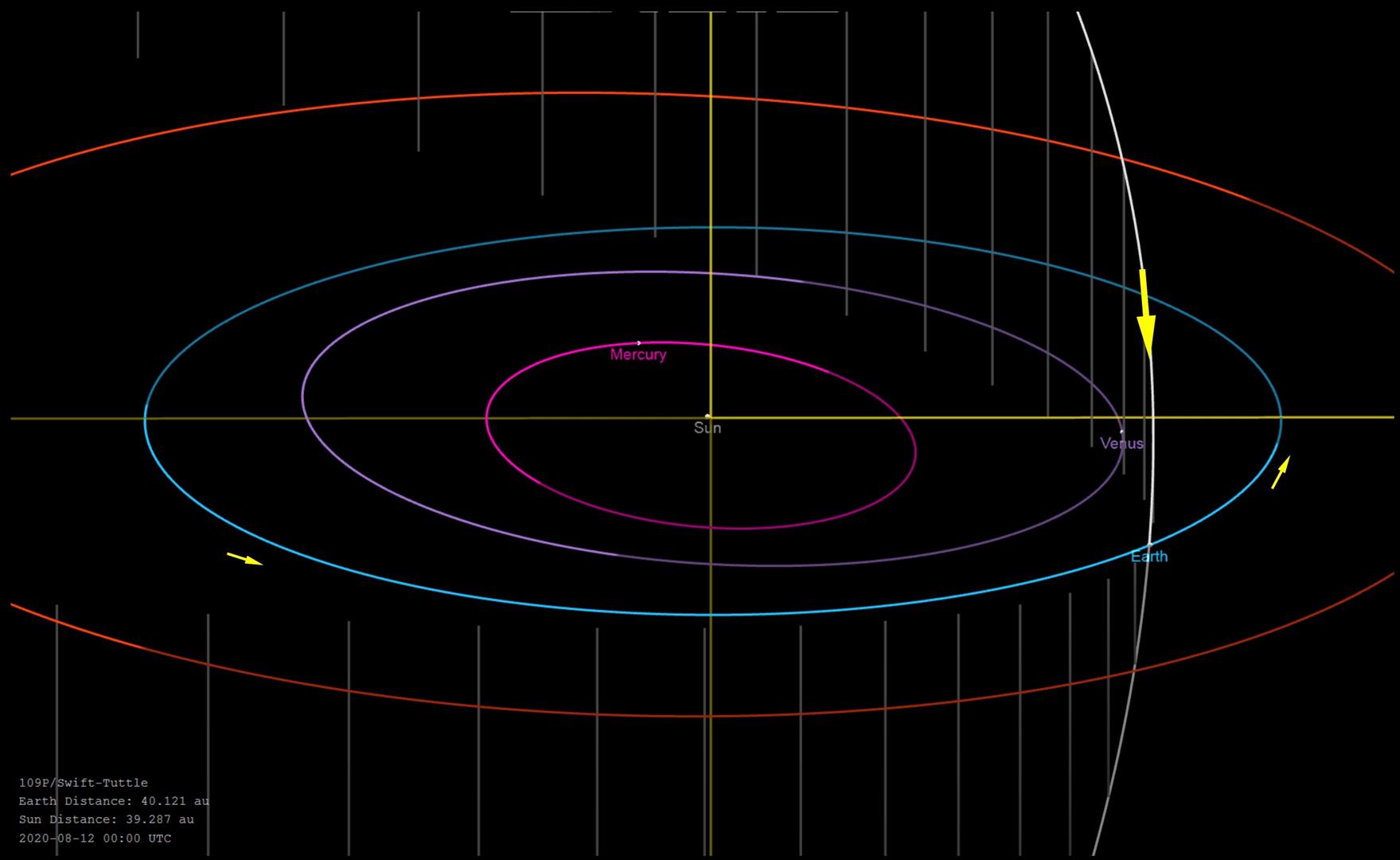
109P Swift-Tuttle: Crossing Earth’s orbit from above the Ecliptic, present inclination of 66.55°.
4. Approaching Earth in a similar plane but opposite direction to Earth's Orbit. The example below is 1P Halley's Comet. It is in a
retrograde orbit, passing Earth at ~ 41 km/s, in the opposite direction to Earth's orbit, so impacts would be in the order of 70 km/s.
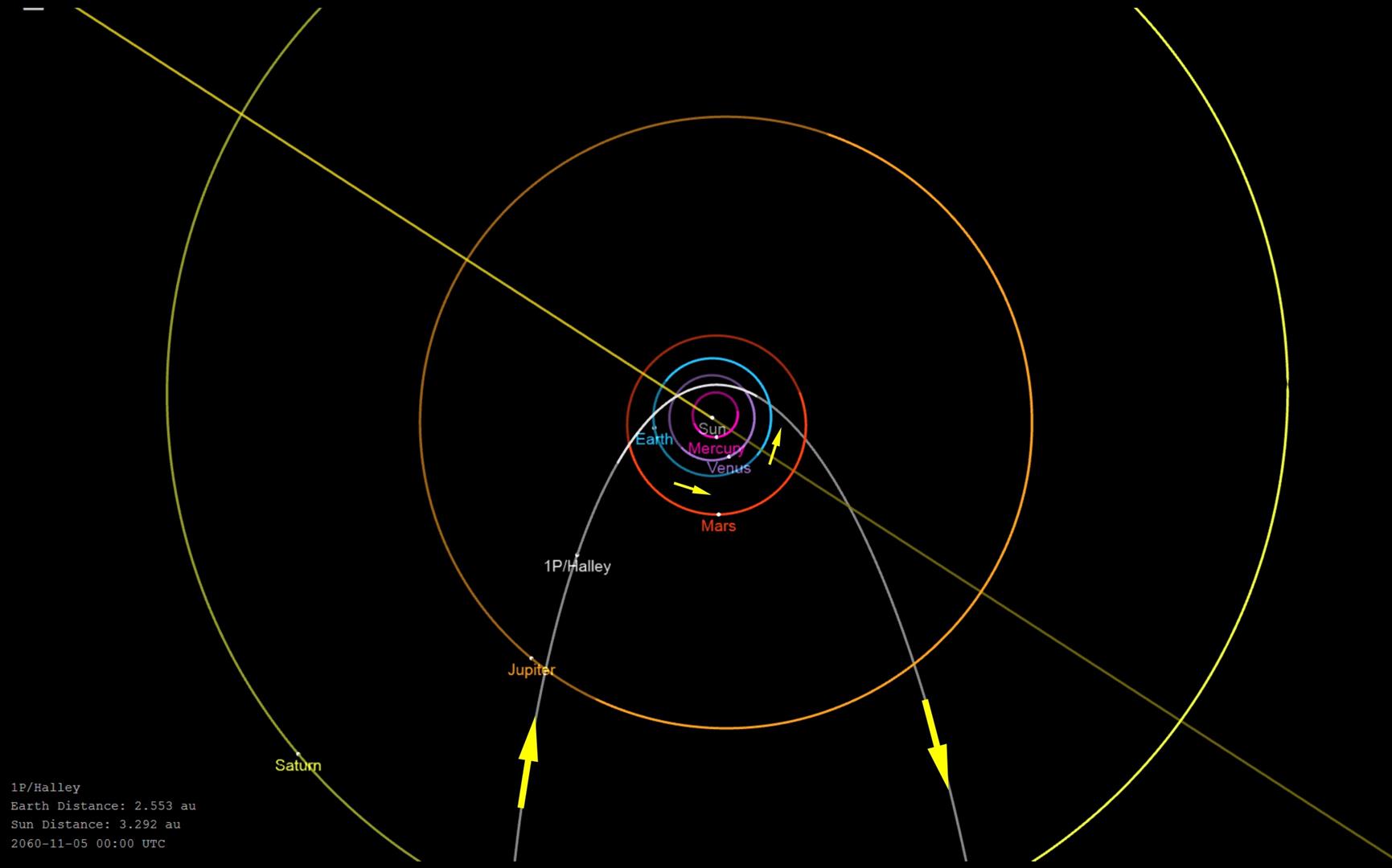
1P Halley's Comet: Retrograde orbit.